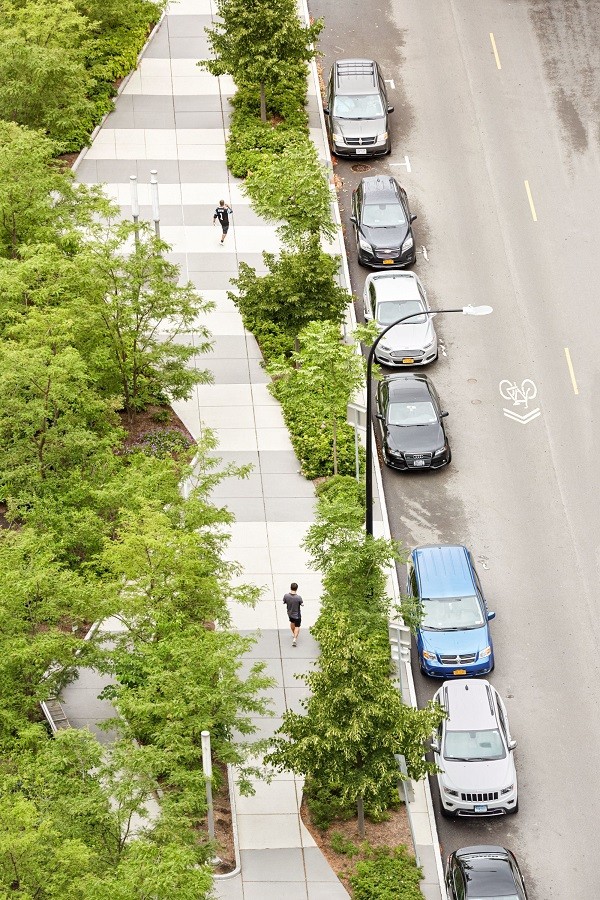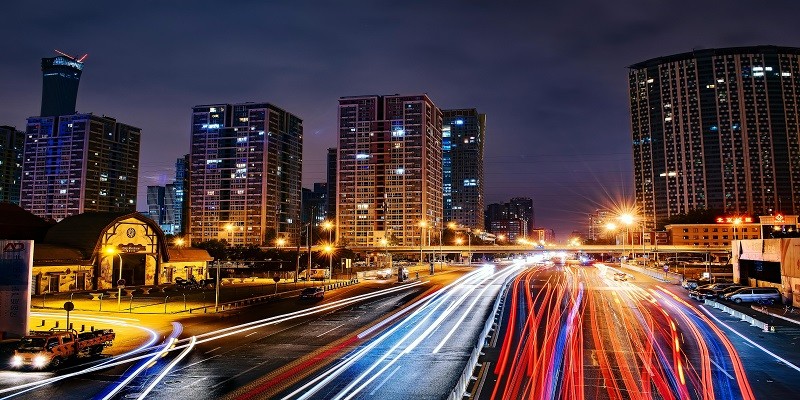Last Updated on May 9, 2025 by Jim C.
Smart cities utilize technology to make urban areas more efficient, sustainable, and environmentally friendly, resulting in greener and smarter communities. By integrating various technologies such as the Internet of Things (IoT), artificial intelligence (AI), and renewable energy sources, smart cities aim to enhance the quality of life for residents, improve infrastructure and sustainability, and optimize resource management.
These advances enable cities to actively monitor and manage critical systems like water and energy supply, waste management, transportation, and public safety. With the use of sensors, data analytics, and connectivity, smart cities can make informed decisions, reduce energy consumption, minimize carbon footprint, improve traffic flow and public services, and create a more livable environment for all.

Challenges In Urban Areas
Technology is revolutionizing urban spaces, creating smarter and greener cities. Challenges in urban areas include infrastructure optimization and sustainable energy solutions. Smart cities harness innovation to enhance efficiency, sustainability, and quality of life for residents.
Traffic Congestion
Traffic congestion is a major challenge in urban areas, leading to increased travel times and frustration for residents and commuters. The proliferation of vehicles on the roads has resulted in a significant strain on transportation infrastructure, causing gridlock and impeding the flow of traffic.
Pollution
Urban areas often grapple with high levels of pollution, particularly air and water pollution. The prevalence of vehicular emissions, industrial activities, and waste disposal contribute to environmental degradation, affecting the health and well-being of city residents and the local ecosystem.
Technology solutions have the potential to address these urban challenges and pave the way for smarter, more sustainable cities.
Integration Of Technology
When it comes to creating smart and sustainable cities, the integration of technology plays a crucial role. The seamless integration of various technological advancements enables urban areas to become smarter and greener. Two key aspects of this integration are the Internet of Things (IoT) and connectivity, as well as the development of smart infrastructure.
IoT And Connectivity
The Internet of Things (IoT) refers to the network of interconnected devices and objects that collect and exchange data. In the context of smart cities, IoT plays a significant role in collecting real-time data from various sources such as sensors, vehicles, and infrastructure. This data is then processed and analyzed to make informed decisions, improve efficiency, and enhance the overall quality of life in urban areas.
With the rise of IoT in smart cities, connectivity becomes a vital factor. Robust and pervasive connectivity allows devices and sensors to communicate seamlessly, ensuring the smooth flow of data. Through reliable connectivity, smart cities can monitor and manage critical systems like traffic, waste management, and energy consumption in real time.
Smart Infrastructure
Another crucial aspect of integrating technology into smart cities is the development of smart infrastructure. Smart infrastructure refers to the deployment of advanced technologies within the physical infrastructure of urban areas, enabling them to operate more efficiently and sustainably.
One example of smart infrastructure is the implementation of smart grids. With the help of IoT and connectivity, smart grids optimize the distribution and consumption of electricity. By monitoring energy usage patterns and regulating supply, smart grids ensure efficient energy distribution, reducing wastage and carbon footprint.
In addition to smart grids, smart infrastructure can include intelligent transportation systems, smart buildings, and even smart waste management. For instance, intelligent transportation systems leverage technologies such as GPS and real-time data to optimize traffic flow, reduce congestion, and minimize travel time and fuel consumption.
The integration of technology in smart cities not only enhances efficiency but also contributes to a greener environment. By leveraging IoT, connectivity, and smart infrastructure, urban areas can reduce energy consumption, minimize waste, and promote sustainable development. As technology continues to advance, the possibilities for creating smarter and greener cities are endless.
Benefits Of Smart Cities
Discover the advantages of smart cities integrating technology for eco-friendly urban solutions, enhancing efficiency and sustainability in urban landscapes. Implementing smart technologies like IoT and data analytics is revolutionizing urban living by optimizing energy use and improving resource management for a greener future.
Sustainability
Smart cities use technology to create a sustainable environment, benefiting both the residents and the planet. With sensors and advanced data analytics, these cities can monitor and manage various resources in real time. For example, smart grid systems optimize energy distribution, reducing waste and ensuring that electricity is used efficiently. Similarly, smart water management systems detect leaks and adjust water supply, conserving water in an era of increasing scarcity. By implementing such measures, smart cities can reduce their carbon footprint, promote renewable energy sources, and create greener and healthier spaces for their inhabitants.
Efficiency
Efficiency is one of the key benefits of smart cities. By leveraging technology, urban areas can streamline their operations and enhance the delivery of services to residents. Intelligent transportation systems, for instance, use traffic data and predictive analytics to optimize traffic flow, reducing congestion and travel times. This not only enhances the quality of life for residents but also improves air quality by minimizing vehicle emissions. Additionally, smart waste management systems use real-time data to optimize garbage collection routes, reducing unnecessary pickups and minimizing costs. By improving the efficiency of various city processes, smart cities can enhance resource allocation and deliver services more effectively.
Connectivity
Smart cities leverage connectivity to enhance the lives of their residents. With the widespread availability of high-speed internet and the Internet of Things (IoT), smart cities can connect various devices and infrastructure to create a seamlessly integrated urban environment. For example, connected streetlights can adjust their brightness based on real-time data, reducing energy consumption. Smart parking systems can guide drivers to available parking spaces, reducing traffic congestion and frustration. Additionally, connected healthcare devices can transmit patients’ vital signs to medical professionals, allowing for remote monitoring and timely intervention. By connecting various elements of a city, smart cities enable a more convenient and efficient way of living.
Data-driven Decision Making
In smart cities, decision-making processes are driven by data. Advanced analytics and artificial intelligence algorithms analyze vast amounts of data from various sources to provide insights and guide decision-making. For example, real-time data from sensors can help city planners identify areas with high pollution levels and implement mitigation measures. Data on energy consumption patterns can inform policies and initiatives to promote energy efficiency. By utilizing data-driven decision-making, smart cities can optimize resource allocation, improve service delivery, and enhance the overall quality of life for their residents.
Resilience And Safety
Smart cities prioritize resilience and safety by leveraging technology to enhance emergency response systems and improve infrastructure. For instance, advanced sensors and real-time data analysis enable early detection of natural disasters such as earthquakes, floods, or fires. This allows authorities to respond quickly and effectively, minimizing damage and saving lives. Additionally, smart surveillance systems and predictive analytics help prevent crime and improve public safety. By incorporating resilience and safety measures, smart cities create a secure and protected environment for their residents, ensuring their well-being and peace of mind.
Inclusivity
Smart cities strive for inclusivity by leveraging technology to bridge the digital divide and provide equal access to resources and services. By ensuring widespread access to high-speed internet and digital infrastructure, smart cities enable residents to fully participate in the digital economy. Additionally, smart city initiatives focus on serving the needs of all residents, including vulnerable populations. For example, connected healthcare systems can provide remote medical consultations, benefiting those who have limited access to healthcare facilities. By prioritizing inclusivity, smart cities ensure that the benefits of technology and innovation are available to all, fostering a more equal society.
Overall, smart cities bring numerous benefits, including sustainability, efficiency, connectivity, data-driven decision-making, resilience, safety, and inclusivity. By harnessing the power of technology, these cities create a more livable and environmentally friendly urban landscape. From reducing energy consumption to providing equal access to services, smart cities pave the way for a brighter and more sustainable future.
Future Of Smart Cities
As we look to the future of smart cities, there is no denying the pivotal role that technology will continue to play in urban development. With the constant evolution of innovation, smart cities are poised to revolutionize urban living by enhancing sustainability, efficiency, and livability. This transformation not only affects individual cities but also has a global impact, paving the way for a more sustainable and connected world.
Innovations
The future of smart cities is driven by innovative technologies that are reshaping the urban landscape. From the integration of Internet of Things (IoT) devices to the implementation of advanced analytics and AI-driven solutions, these innovations are fueling the development of smart infrastructure, sustainable energy systems, and efficient transportation networks. These advancements are not only enhancing the quality of life for residents but also optimizing resource allocation and reducing environmental impact.
Global Impact
The emergence of smart cities is not confined to individual regions; it has a significant global impact. By embracing smart technology, cities around the world are collectively contributing to more sustainable and greener urban environments. The exchange of best practices and the adoption of standardized smart city solutions are fostering a global network of interconnected cities that share a common goal of environmental preservation, resource optimization, and enhanced citizen well-being.
Frequently Asked Questions
How Does Technology Contribute To Smart Cities?
Technology enables efficient services, sustainable practices, and data-driven decision-making in urban areas.
What Are The Key Benefits Of Smart Cities?
Smart cities offer improved quality of life, enhanced safety, optimized resources, and sustainability.
How Do Smart Cities Leverage Data For Decision-making?
Data analysis helps cities identify patterns, predict trends, and make informed decisions for development.
What Role Does IoT Play In Making Cities Smarter?
The Internet of Things connects devices to share data, optimize operations, and enhance urban living.
How Are Smart Cities Addressing Environmental Challenges?
Smart cities promote eco-friendly initiatives like renewable energy, waste reduction, and green infrastructure.
Conclusion
As technology advances, so do our cities, becoming smarter and more sustainable. By integrating smart technologies, we can reduce energy consumption, minimize waste, and improve overall quality of life. As we continue to innovate, the exciting potential for green, connected cities is within reach.
Let’s work together to create a better future for our urban environments.

